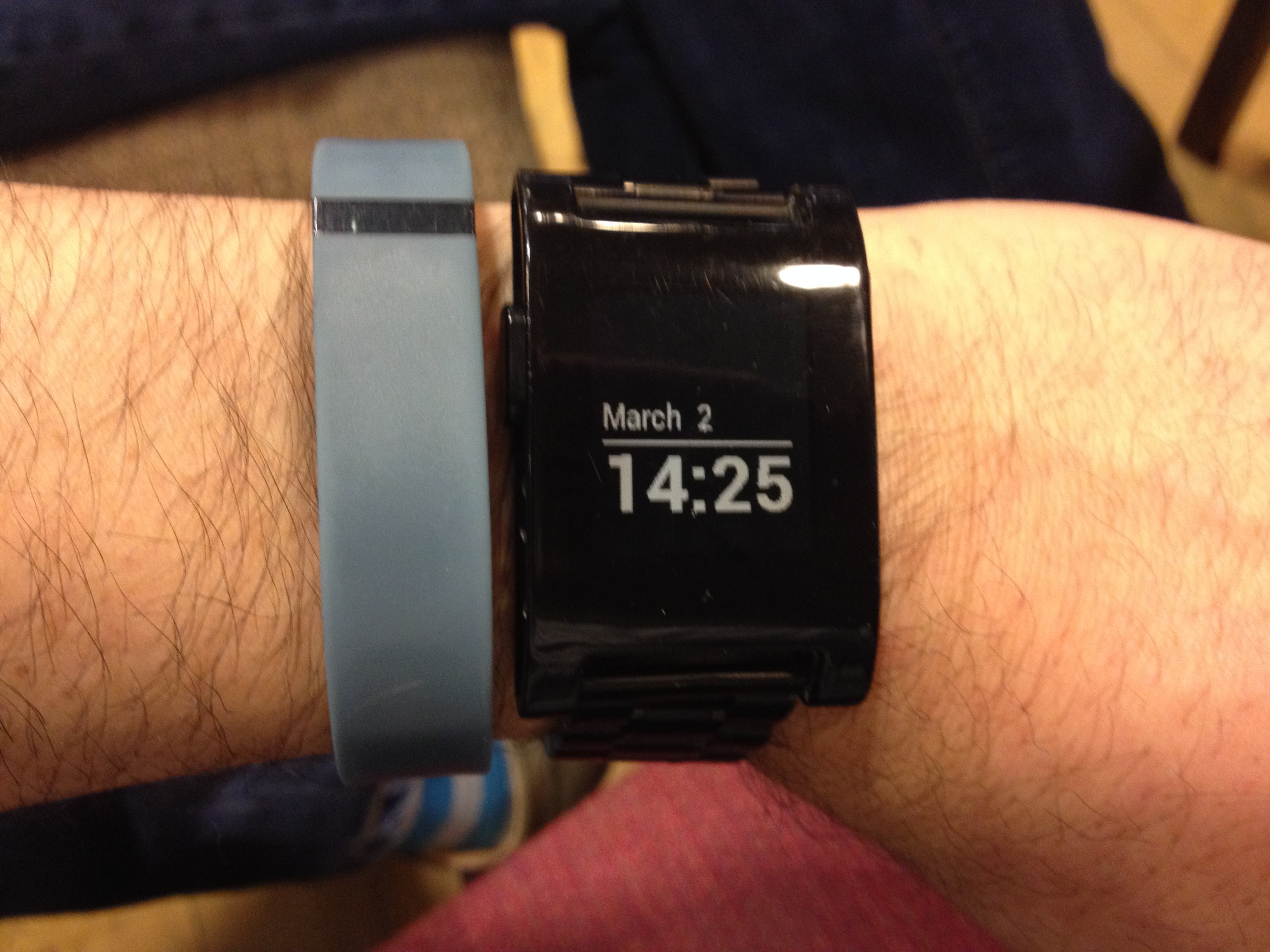So I’ve now had my Pebble smart watch just over a year so I thought that it would be a good time to reflect on the aims and whether they have been met.
For those that don’t know the Pebble is the darling of the crowd funding site Kickstarter, the first and to my knowledge still the only project to have raised over $10M. This was significant because it was only aiming to raise $10,000 and showed what a huge demand there was for smart wearables.
I, along with thousands of others, pledged my support and settled down for a long wait. Nine months later shipping began and my watch arrived to much excitement in the Thompson household.
I was sold in the promise of being able to do so much more than simply being able to tell the time. The Kickstarter page promised multiple watch faces, integration with third party apps, such as Runkeeper, and an API to allow developers to create their own apps.
And more or less all that has been delivered. Initial glitches with CLI not working on iOS have been resolved, the music controls work fantastically well and there are a variety of good watch faces to choose from.
The release of version 2 of the api recently opens up the way for a much more seamless experience previously it felt very fragmented as you had to go off to other sites to find watchfaces and apps. Now this can all be done from within the pebble app itself.
And, for iOS at least, that’s where the good news ends.
There has always been a problem with a message popping up on iOS saying “Pebble needs to communicate with the Pebble Technology Corp” (see below) this happens infrequently now but when you do see it you know that there is no communications between the watch and your phone.
Version 2 of the API also formally introduced the ability for apps to access the internet and make requests. This should allow Pebble apps, such as Foursquare (shown left) to make a call to find the near-by checkin places. The problem is that in order to maximise the memory on the iPhone apps periodically get sent to the background and once they do this link gets severed.
Regrettably that renders the most interesting aspects of the watch useless. Pebble lay the blame squarely at the door of Apple but that doesn’t really help the user and you could say that Pebble should have know about this from day one. They could also be more transparent in acknowledging the issue publicly. I suppose that the one saving grace for Pebble is that it would equally apply to other smart watch developers too.
Since the original pebble backers watches have been released they have become more widely available (in the US at least) in mainstream outlets such as Best Buy and Amazon. Pebble have also released an up-market version of the watch called the Steel which looks great but suffers from the same problems as the original as the software is the same.
I really love me Pebble and really want to see it reach its full potential but while it is hampered by the software issue on iOS it’s always going to fall short.
(And no I am not going to transfer to Android!)


